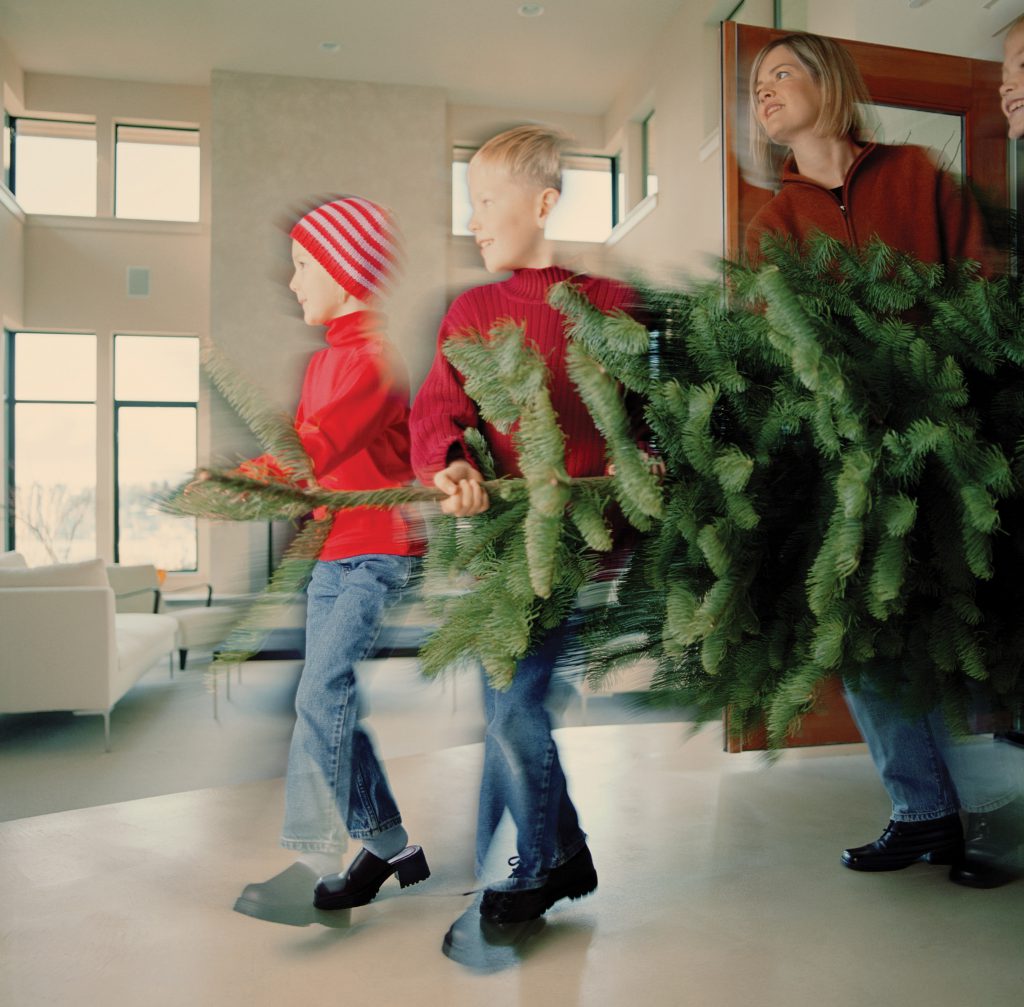My brother Tim used to eat tinsel. Why do I tell you this? Well, first, because it’s hilarious. But more importantly, because it demonstrates that there’s something about a Christmas tree that draws one to it. Even though your tree is probably bone dry and headed to the curb (or to its box in the storage space if your tree is artificial), who among us doesn’t take heart in a living thing that thrives and grows year-round and maintains its color even in the harshest of conditions? Evergreens are an important symbol during the Christmas season in the Church. But why? What is it about the evergreen that it has become such an enduring symbol of our Catholic faith?
Evergreens Represent Hope
No matter where you live, winter can get pretty bleak. Especially after Christmas, and especially when it gets dark at 4 p.m. You don’t have to live in a cold-weather climate to appreciate the persistence and beauty of evergreen trees. Heck, even 1.4 percent of those of you in Florida suffer from seasonal affective disorder. So, to see green poking through an otherwise seemingly barren landscape reminds us of the imminent return of spring, of the persistence of God’s love for us even in the darkest of times.
Evergreens Represent Renewal
In broadcasting, “evergreen” means content that’s always relevant. The term comes from conifers that stay vibrant even when it’s cold, dark and dry. Unlike their dramatic deciduous counterparts, evergreens grow new leaves year-round, continually replacing those they shed. It’s no coincidence, then, that the New Evangelization that Pope Benedict XVI speaks about is a renewal of our faith. It’s not a new faith altogether. It’s simply the continuation and rediscovery of the beauty of the faith on an ongoing basis.
Evergreens Grow in Challenging Environments
Evergreens thrive in conditions where other plants can’t. Acidic soil. Dry soil. Rocky terrain. Evergreens make their home where other, less hearty greenery wouldn’t dare. In this way the evergreen represents the fact that the Catholic Church not only lives in the margins, it thrives there. We welcome the marginalized, as Jesus did. We do not work toward or expect an “easy” Church, or one that does not expect us to be durable. We are called to be lively Christians even in a difficult economy. Even when we disagree with one another. Even when times are troubling and our spirits may below. In this way, we are called to be evergreen in Jesus’ name.
Don’t let the post-Christmas blahs take over your home! Keep the spirit alive by using evergreen in creative spaces.



